Diclofenac dosages: 100 mg
Diclofenac packs: 90 pills, 180 pills, 270 pills, 360 pills
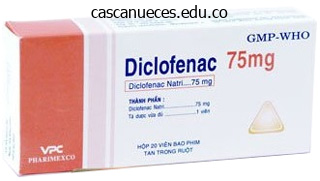
Purchase 100 mg diclofenac with amex
After a variable time frame, the capillaries and possibly the venules dilate in response to each hypoxia and the buildup of products of anaerobic metabolism. As the arterial spasm relaxes, the initial blood move into the dilated capillaries rapidly desaturates, causing cyanosis. Finally, rubor outcomes from growing amounts of the blood entering the dilated capillary bed, and the digits return to regular as the capillaries constrict. Since these patients may have the same arteriographic and hemodynamic abnormalities encountered in sufferers with the classic tricolour modifications, colour changes are now not thought-about essential for analysis. Raynaud hypothesized that the situation was due to sympathetic nervous system hyperactivity. Eventually, a selection of investigators observed that classification of patient by the pathophysiologic cause (obstruction vs. Additionally, analysis, treatment and response to therapy of sufferers are better directed by the pathophysiologic classification. Arterial closure in these patients is attributable to a markedly elevated drive of cold-induced vasospasm. The alpha1-adrenoceptors are positioned post-synaptically and, when stimulated, produce vasoconstriction. While stimulation of the presynaptic alpha2-receptors inhibits norepinephrine launch and has a vasodilatory impact, stimulation of post-synaptic alpha2-receptors induces vasoconstriction. Surveys in areas with cold, damp climates have estimated a disease prevalence of about 20%�30%. Typically, youthful ladies will Many of those circumstances may be associated with diffuse obstructive palmar and digital arterial illness, which may be sufficiently extreme to produce ischemic ulceration. The possibility that digital gangrene or ulceration could result from intrinsic small artery occlusive illness with regular proximal arteries is often considered only after an extensive analysis of a patient with hand and finger ischemia fails to reveal proximal arterial obstruction or a cardiac embolic source. Large artery occlusive illness proximal to the wrist could end in ischemic finger ulceration, often in affiliation with digital artery embolization. Although probably the most frequent signs of giant cell arteritis are related to temporal arteritis and polymyalgia rheumatica, the looks of isolated arm ischemia in older girls is sufficiently characteristic of this situation to warrant consideration of this analysis even in the absence of other manifestations of the disease. This is particularly true in aged females with bilateral upper extremity ischemic signs in the absence of acknowledged atherosclerotic risk factors. The symptoms might range from cold intolerance to exertional pain to pulselessness and extreme ischemia, though tissue loss is unusual. The erythrocyte sedimentation fee is sort of always elevated and supplies a helpful screening check. A small variety of sufferers with digital gangrene will be discovered to have a malignancy. In certain sufferers, the malignancy-associated ischemia is as a outcome of of arterial thrombosis, whereas in others the mechanism appears to be that of an inflammatory arteritis. Key point Thumb involvement is more incessantly related to a connective tissue dysfunction. We apply the time period hypersensitivity angiitis to a subset of sufferers with digital gangrene ensuing from intrinsic small artery occlusive illness. These sufferers are characterised by the precipitous onset of severe ischemia on the ideas of a quantity of fingers with none premonitory signs or symptoms. Immunologic evaluation on this affected person group sometimes fails to reveal any diagnostic serologic abnormalities, whereas arteriography consistently demonstrates diffuse palmar and digital arterial occlusion. It seems to Some elevated sensitivity of the ft and toes could also be elicited, and between 5% and 10% of sufferers describe major decrease extremity involvement. The lower extremities are occasionally concerned, and there could also be just a few involved digits. Most assaults precipitated by outside cold exposure terminate only with hand warming. These sufferers are additionally more more probably to current with digital ulceration or gangrene, with two teams rising based on their presentation with an acute or chronic history of finger gangrene. Approximately 40% current within several weeks to a few Clinical analysis of the patient 637 months of the acute onset of digital ischemia. Most of these sufferers experience the precipitous onset of cyanosis and ache involving the distal portions of multiple fingers, adopted in days to a number of weeks by the development of skin necrosis with a variable quantity of tissue loss. Patients frequently describe multiple exacerbations and remissions extending over years. Symptoms of large-vessel occlusive disease, publicity to trauma or frostbite, smoking and drug history and history of malignancy also wants to be sought.
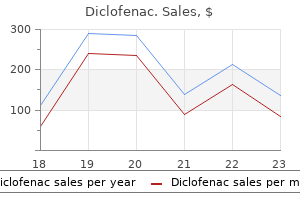
Diclofenac 100mg without prescription
Endovascular treatment for continual sort B dissection: Limitations of brief stent-grafts revealed at midterm follow-up. Potential danger factors of re-intervention after endovascular restore for type B aortic dissections. Key success factors for thoracic endovascular aortic repair for non-acute Stanford type B aortic dissection. Endovascular restore of sophisticated persistent distal aortic dissections: Intermediate outcomes and issues. An in vitro phantom examine on the influence of tear measurement and configuration on the hemodynamics of the lumina in continual sort B aortic dissections. Outcomes after false lumen embolization with lined stent units in chronic dissection. Distal false lumen occlusion in aortic dissection with a selfmade extra-large vascular plug: the candy-plug technique. Surgical therapy dates again to Antyllus, a third-century Greek doctor who ligated each poles of the aneurysm and incised and packed the aneurysm sac. In the Fifties, aneurysm exclusion and bypass with reversed saphenous vein interposition grew to become the primary technique of therapy. Coronary artery disease and cerebral vascular illness occur, respectively, in 35% and 10% of sufferers; hypertension is current in 45% and diabetes mellitus in 13%. The particular genetic defects that result in arterial dilation are yet to be fully elucidated. In Detroit, at Henry Ford Hospital, popliteal aneurysm accounted for 1 in 5000 hospital admissions; there was 1 popliteal aneurysm per 15 belly aortic aneurysms. Popliteal aneurysm is a illness discovered nearly exclusively in males, most often in the sixth decade of life (Table 30. A popliteal artery higher than 2 cm in diameter is usually thought-about aneurysmal. Depending on the findings of these screening checks, the order of therapy may need to be altered. Ultrasound provides sufficient sensitivity and specificity for many scientific selections. Preoperative computed tomographic angiography, particularly given latest advances to permit 3D reconstruction, provides high-quality pictures to the extent of the popliteal artery and infrequently under. Popliteal aneurysms, in contrast to aortic aneurysms, present with rupture less than 5% of the time. Given the relatively low charges of limb salvage as soon as intensive embolization has occurred, any embolization ought to be considered a powerful indication for surgery. The pure history of this situation is worsened by the relative paucity of collateral vessels across the bony and ligamentous knee joint. They have demonstrated efficacy in lysis of thrombus both acute and chronic, venous and arterial and in situ and embolic. Whether vascular patency might be preserved after thrombolytic recanalization is decided by the character of the primary lesion. The use of thrombolytics within the therapy of popliteal aneurysms has a powerful appeal because the most frequent cause of reconstruction failure is thromboembolic occlusion of outflow vessels. Catheterbased infusion instantly into the distal embolus could assist prevent or resolve this complication. Preoperative thrombolysis of a identified thrombosed popliteal aneurysm which has not caused embolization is pointless and maybe unwise. The diagnosis of popliteal aneurysm is often made by the way after therapeutic thrombolysis for presumed atherosclerotic occlusion. The general impact of thrombolytics in a patient with thromboembolic outflow compromise appears to be useful. There have been 5 "occlusive complications" and one secondary amputation within the main bypass group versus none within the thrombolytic group. These seven sufferers were described as having thrombosis of all three of their run-off vessels. The patients handled with preoperative thrombolysis had higher graft patency and limb salvage than the sufferers that underwent emergency main operation.
Syndromes
- Oxytocin -- stimulates the uterus to contract during labor and the breasts to release milk
- Had depression, bipolar disorder or an anxiety disorder before your pregnancy, or with a previous pregnancy
- Scaling of the skin
- Epiglottitis
- Have one to eight teeth
- Abdominal cramps with or without vaginal bleeding
- Diseases such as retroperitoneal fibrosis, retroperitoneal sarcomas, or cancers that spread to the lymph nodes near the ureters
- Vomiting blood
Purchase diclofenac 100 mg with visa
Gentle manipulation of the thin-walled, friable inside carotid artery is necessary to stop possible dislodgment of atherothrombotic material and to decrease endothelial injury. Endarterectomy of related bifurcation atheromas is as essential as complete mobilization and exact geometric planning to remove potential kinking. In order to minimize the dangers of suture line disruption of the friable inner carotid artery, some authors have advocated resection of a sleeve of common carotid artery, thus inserting the anastomosis in this vessel of larger calibre and larger structural integrity. However, this system frequently necessitates sacrifice of the external carotid artery � potentially an necessary route of cerebral collateral blood circulate. To protect the external carotid artery, others have really helpful ligation on the origin of the interior carotid artery, with translocation of the orifice of the internal carotid artery extra proximally onto the anterolateral frequent carotid artery. The anastomosis is constructed with continuous 5�0 or 6�0 monofilament suture, and the shunt is eliminated immediately prior to completion of the anastomosis. Because of the intensive dissection necessary, common anaesthesia is regularly employed, but native or regional block anaesthesia can also be appropriate for some sufferers. In correctly selected subjects, the outcomes of carotid arterioplasty for congenital loops and coils are fairly acceptable, with roughly 80% of patients fully relieved of symptoms. Perioperative mixed neurologic morbidity and mortality charges ought to be under 5%. Acute angulation of the inner carotid artery is nearly invariably related to atherosclerosis, with the distal tip of the rigid atheroma comparable to the vertex of the carotid angle. The exact incidence of acute angulation of the carotid artery is unknown; nevertheless, in selected patients with cerebral signs, the incidence varies from 4% to 20%. Nevertheless, most authorities agree that a demonstrated carotid kink represents a larger risk of ischemic stroke than does elongation or coiling of the internal carotid artery. The first direct operation for correction of an internal carotid artery kink was carried out by Hsu and Kistin27 in 1956 however was unsuccessful. In 1962, Derrick and Smith29 postulated that carotid kinking was more incessantly causal of cerebral infarction than previously recognized and endorsed a extra aggressive attitude in path of the investigation and operative correction of carotid kinks. On the opposite hand, some have de-emphasized the importance of carotid kink alone in the production of neurologic signs and have accurately identified the high prevalence of concomitant atherosclerosis and different coexisting nonvascular pathology as potentially responsible for the obvious cerebral ischemia. He confirmed the hemodynamic significance Carotid kink 547 of the carotid kink with reductions of arterial circulate from 30% to 80% during testing. Interestingly, each of the 16 sufferers undergoing operation had atherosclerotic stenoses and presumably underwent concomitant endarterectomy of an related carotid atheroma. Symptoms produced by the kinked inner carotid artery are nearly indistinguishable from the transient and permanent neurologic deficits which may be of atherosclerotic origin. Historical clues suggestive of the presence of a carotid kink typically embody the precipitation of cerebral signs with extremes of cervical motion. Development of an audible bruit with cervical rotation may be observed, however bodily examination of the cervical region is most frequently completely regular. The authors endorse the more conservative approach to the isolated asymptomatic kink, for it appears that the pure historical past of this lesion is much less morbid than operative correction. Generally accepted indications for the correction of inner carotid artery kinks are the following: (1) proof that the kink could additionally be answerable for cerebral ischemia by copy of signs on head rotation, flexion or extension and (2) exclusion of different craniocerebral vascular, neoplastic or developmental abnormalities which might account for comparable symptoms. In actual practice, most patients with extracranial carotid kinks endure operation primarily for correction of ulcerostenosing atheromas of the carotid with coincidental angulation of the artery famous on the apex of the rigid atheroma. Following endarterectomy and primary or patch closure of the arteriotomy, the acute angulation is frequently relieved. On other events, acute angulation of 90� or much less is observed after performance of the endarterectomy. If such a kinked vessel creates a harsh thrill or produces significant intraoperative pressure discount in the distal internal carotid artery, the angulation must be corrected. Following endarterectomy, if required, resection of a cuff of proximal inner carotid is carried out over an indwelling shunt, which serves moreover as a reconstruction stent. In the absence of intraluminal shunt utilization, cautious inner carotid detorsion and spatial orientation are required to reduce anastomotic move disturbances.
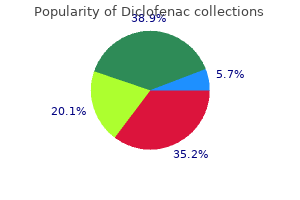
Buy generic diclofenac 50 mg on-line
Risk components for deep vein thrombosis and pulmonary embolism: A population-based case-control study. Oral contraceptives and the absolute danger of venous thromboembolism in ladies with single or a quantity of thrombophilic defects: Results from a retrospective family cohort research. Venous thromboembolism throughout energetic disease and remission in inflammatory bowel illness: A cohort research. Femoral deep vein thrombosis associated with central venous catheterization: Results from a prospective, randomized trial. Venous thrombosis-associated inflammation and attenuation with neutralizing antibodies to cytokines and adhesion molecules. Venous claudication in iliofemoral thrombosis: Long-term effects on venous hemodynamics, medical status, and high quality of life. The postthrombotic syndrome: Evidence-based prevention, analysis, and treatment strategies: A scientific assertion from the American Heart Association. Determinants and time course of the postthrombotic syndrome after acute deep venous thrombosis. Longitudinal degree 1 studies are lacking for better understanding of illness development. An obstacle to progress is the sheer weight of monumental accrued literature steeped in dogma that has retarded a rational approach. A comprehensive classification of the polymorphous disease � a necessity for methodical analysis � has emerged only lately. Considerable progress has occurred since, coincidentally, with emergence of newer imaging techniques to explore the disease. Prevalence estimates are imprecise as a end result of full thrombus resolution could obscure the original pathology. Primary obstruction (May�Thurner syndrome) is known to end in secondary thrombosis, further complicating analysis. The majority of varices are major in origin with variable genetic, hormonal and degenerative influences that predispose to it. Recent evidence signifies that reflux-mediated irritation of valve cusps could lead to aberration of collagen synthesis from an excess of metalloproteinases leading to abnormal wall structure � a heterogeneous vein with hypertrophied inelastic segments interspersed with atrophied parts outcomes typical of varices. Clinical development does happen stepwise in 677 678 Pathophysiology of continual venous illness Clinical stage, etiology, anatomy and pathology classification: summary. Etiologic Ec: congenital Ep: primary Es: secondary (post-thrombotic) En: no venous cause recognized Anatomic Pathophysiologic As: superficial veins Pr: reflux Ap: perforator veins Po: obstruction Ad: deep veins Pr,o: reflux and obstruction An: no venous Pn: no venous location recognized pathophysiology identifiable table 46. Clinical sample Varices Uncomplicated With native symptoms With native issues Complex varicose illness Venous hypertension syndrome Venous leg swelling Complex multisystem venous disease commonly in the left decrease limb. Valves in the iliac vein and the widespread femoral vein may be present in about 20% and 50% of limbs, respectively, and are thought to play a job in saphenous reflux. In about 10%, the valve is competent with reflux entering the vein via a perforator or tributary (escape point) decrease down. Valves become extra frequent in distal deep venous segments and are most quite a few in the crural veins, teleologically designed to protect against the elevated orthostatic venous strain due to the gravity element. The lower stress prevails for as much as 20 seconds or extra earlier than restoration through arterial influx. The foot pump additionally ejects venous quantity, arguably priming the calf pump by way of foot perforators (many are avalvular) for sequential action during walking. Clinical focus has centred on refluxive valves in the femoro-popliteal segments which can be repaired to induce remission of Clinical stage, etiology, anatomy and pathology classification 679 symptoms. Reflux in the superficial system additionally compromises the calf pump due to premature refilling of the calf pump through perforators. Perforator valves are designed to forestall outward circulate from the deep system into superficial veins, however bidirectional circulate has been noticed in perforators close to the ankle in regular individuals. The cause of main valve reflux is degenerative, resulting in lax and redundant valve cusps. In some circumstances, valve cusps are comparatively undamaged, however become redundant and refluxive as a result of valve station fibrosis and restriction.
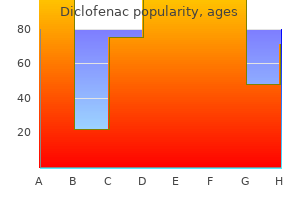
Order diclofenac 75mg on-line
For these reasons, surgeons should be conversant in the indications and software of this technique. Clinical outcomes of 5358 patients present process direct open bypass or endovascular therapy for aortoiliac occlusive disease: A systematic evaluate and metaanalysis. A modern comparison of aortofemoral bypass and aortoiliac stenting in the remedy of aortoiliac occlusive illness. Long-term consequence after treatment of aortic graft an infection with staged extraanatomic bypass grafting and aortic graft removal. Unsuspected influx illness in candidates for axillofemoral bypass operations: A potential research. Comparison of axillofemoral and aortofemoral bypass for aortoiliac occlusive illness. Clinical outcomes of axillobifemoral bypass utilizing externally supported polytetrafluoroethylene. Comparative analysis of externally supported Dacron and polytetrafluoroethylene prosthetic bypasses for femorofemoral and axillofemoral arterial reconstructions. A comparative evaluation of externally supported polytetrafluoroethylene axillobifemoral and axillounifemoral bypass grafts. Is axillo-bilateral femoral graft an effective substitute for aortic-bilateral iliac/femoral graft Femorofemoral bypass to the deep femoral artery for limb salvage after prior failed percutaneous endovascular intervention. Femorofemoral bypass as an alternative to a direct aortic strategy in day by day practice: Appraisal of its present indications and midterm outcomes. Long-term results of a multicenter randomized research on direct versus crossover bypass for unilateral iliac artery occlusive illness. Femorofemoral bypass grafts: Factors influencing long-term patency rate and outcome. Patency charges of femorofemoral bypasses associated with endovascular aneurysm restore surpass these carried out for occlusive illness. A bypass hemograft from thoracic aorta to femoral arteries for occlusive vascular illness: A case report. Descending thoracic aorta to iliofemoral artery bypass grafting: A role for major revascularization for aortoiliac occlusive disease Thoracic aortobifemoral bypass in remedy of juxtarenal Leriche syndrome (midterm results). Obturator bypass: A traditional approach for the treatment of latest groin infection. The obturator foramen bypass: An different procedure in iliofemoral artery revascularization. Transobturator aorto-profunda femoral artery bypass utilizing the direct medial thigh approach. The greater mortality normally related to above-knee amputation is due to extra extreme and widespread cardiovascular ailments in that group of sufferers. More than 70% of sufferers requiring amputation for peripheral vascular illness produce other main systemic manifestations of atherosclerosis. In the United Kingdom, approximately sixty five,000 amputees are known to the Department of Health and Social Security, with 6,000 new patients being referred to limb-fitting centres yearly. Diabetes mellitus is the underlying illness for amputation in more than two thirds of circumstances. In general phrases, the indications for amputation within the dysvascular patient are (1) complication of diabetes mellitus, (2) nondiabetic infection with ischemia, (3) osteomyelitis, (4) trauma, (5) failed limb salvage operations and (6) failed minor amputation. Although above-knee amputation does carry the next operative mortality danger than below-knee amputation,1,2 Rush et al. If the patient has introduced 311 312 Amputation in the dysvascular affected person late, with irreversible tissue loss accompanied by systemic toxicity, with or without myonecrosis, urgent amputation is indicated. In aged sufferers with sepsis, physiologic amputation quite than pressing surgical amputation may be an necessary first step in lowering affected person mortality.
Generic 50 mg diclofenac overnight delivery
Venous claudication in iliofemoral thrombosis: Long-term results on venous haemodynamics, medical status, and high quality of life. Venous perform assessed during a 5 yr interval after acute ilio-femoral venous thrombosis handled with anticoagulation. A technique of aggressive regional remedy for acute iliofemoral venous thrombosis with modern venous thrombectomy or catheter-directed thrombolysis. Randomised trial of effect of compression stockings in patients with symptomatic proximal-vein thrombosis. Below-knee elastic compression stockings to prevent the postthrombotic syndrome: A randomized, controlled trial. Compression and strolling versus bed rest in the treatment of proximal deep venous thrombosis with low molecular weight heparin. Does the location of thrombosis determine the danger of illness recurrence in sufferers with proximal deep vein thrombosis Residual venous thrombosis as a predictive issue of recurrent venous thromboembolism. Quantitative assessment of thrombus burden predicts the result of therapy for venous thrombosis: A systematic evaluation. Significance of popliteal reflux in relation to ambulatory venous pressure and ulceration. Early followup and remedy recommendations for isolated calf deep venous thrombosis. Evaluation of thrombolysis in a porcine mannequin of continual deep venous thrombosis: An endovascular mannequin. Pharmacomechanical thrombolysis of acute and chronic symptomatic deep vein thrombosis: A systematic evaluation of literature. Randomized controlled trial of tissue plasminogen activator in proximal deep venous thrombosis. Short- and long-term results after thrombolytic therapy of deep venous thrombosis. Treatment of deep vein thrombosis with heparin or streptokinase: longterm venous perform assessment. Transcatheter fibrinolytic therapy and angioplasty for left iliofemoral venous thrombosis. Iliofemoral deep venous thrombosis: Safety and efficacy end result throughout 5 years of catheter-directed thrombolytic therapy. Iliofemoral deep venous thrombosis: Aggressive remedy with catheterdirected thrombolysis. Intraclot recombinant tissue plasminogen activator within the remedy of deep venous thrombosis of the decrease and upper extremities. Iliofemoral deep vein thrombosis: Conventional remedy versus lysis and percutaneous transluminal angioplasty and stenting. Catheter-directed thrombolysis in deep venous thrombosis with use of reteplase: Immediate results and problems from a pilot examine. Comparison of urokinase, alteplase, and reteplase for catheter-directed thrombolysis of deep venous thrombosis. Preservation of venous valve perform after catheter-directed and systemic thrombolysis for deep venous thrombosis. Catheterdirected thrombolysis for therapy of ilio-femoral deep venous thrombosis is sturdy, preserves venous valve perform and may stop chronic venous insufficiency. Catheter-directed thrombolysis and/or thrombectomy with selective endovascular stenting as options to systemic anticoagulation for remedy of acute deep vein thrombosis. Adjunctive percutaneous mechanical thrombectomy for lower-extremity deep vein thrombosis: Clinical and financial outcomes. Catheterdirected thrombolysis for lower extremity deep venous thrombosis: Report of a nationwide multicenter registry. Catheter-directed thrombolysis for iliofemoral deep venous thrombosis improves health-related high quality of life. Early outcomes of thrombolysis vs anticoagulation in iliofemoral venous thrombosis. Long-term outcomes using catheter-directed thrombolysis in 103 lower limbs with acute iliofemoral venous thrombosis.
Pulmonaria officinalis (Lungwort). Diclofenac.
- Are there safety concerns?
- Dosing considerations for Lungwort.
- How does Lungwort work?
- What is Lungwort?
- Breathing conditions, stomach and intestinal conditions, kidney and urinary tract conditions, wounds, tuberculosis, and other conditions.
Source: http://www.rxlist.com/script/main/art.asp?articlekey=96248
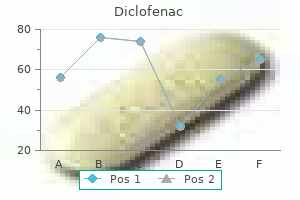
Buy cheap diclofenac 50mg
The terminal half-life is about 10�12 hours and a large variability in plasma ranges has been noticed at commonplace doses. Neither the diploma of inhibition of platelet activity induced by dipyridamole nor the influence of the wide heterogeneity in plasma levels discovered with numerous dose regimens has been studied in relation to medical outcomes. The commonest unwanted effects have been dizziness, which possibly is related to results on blood pressure. Bleeding was no higher in frequency with warfarin plus dipyridamole than with warfarin alone. It is unclear, nevertheless, whether or not warfarin plus dipyridamole is healthier than warfarin plus aspirin. The subsequent European Stroke Prevention Study 2 adopted 6302 topics for 2 years assigned to considered one of four treatment arms: placebo, aspirin (25 mg twice daily), dipyridamole (extended release 200 mg twice daily) or mixed aspirin and dipyridamole. Compared to placebo, the combined danger for stroke and death was lowered 13% with aspirin (p = 0. Headache was more common with dipyridamole and the first reason for research discontinuation. During the trial, 34% of the aspirin and dipyridamole group discontinued remedy as a outcome of adverse occasions or unwanted facet effects (primarily headache) in comparability with 13% on aspirin alone. The range of enchancment in the most strolling distance was 28%�100% in comparability with corresponding improvements in the placebo group of 10%�41%. The drug is extensively metabolized by hepatic cytochromes with the resulting metabolites principally excreted in urine. Prevention of adverse cardiovascular events 149 Further complicating assessment of the risk-to-benefit ratio for aspirin remedy is that dangers for cancer, significantly colon most cancers, could also be diminished with long-term use of aspirin. As low dose (<600 mg/day) has become clearly preferable to greater doses in recent times, newer trials using low doses (162 mg/day) more precisely mirror present apply patterns. If one combines the incidence of main bleeding with antagonistic cardiovascular occasions, 0. The quantity wanted to treat to stop one opposed outcome in a 12 months would be 3300. Aspirin lowered the relative risk for all-cause mortality 6% and the dangers for main cardiovascular occasions 10%. Death from most cancers was reduced 9�24% depending on the size of follow-up (it seems to take 5 years of aspirin therapy to lead to an observable effect) and the dosing, as some research used various day dosing, which has decrease effects on both cancer and cardiovascular disease. Two massive studies employing alternate day aspirin dosing confirmed primarily no cardiovascular benefit. The incidence of major bleeding was found to be elevated 62%�64% according to the results of previous meta-analyses. The advantages and risks of aspirin therapy in main prevention were rare, with magnitudes of tens of occasions per a hundred,000 patient-years. The discount in adverse cardiovascular events was estimated as between 10 and 60 per one hundred,000 patient-years, in comparability with a rise in gastrointestinal bleeding of 68 to 117 per one hundred,000 patient-years. The information suggesting that aspirin reduces the risk for cancer were regarded with warning, as a quantity of large research with follow-up at 10 years or longer showed no proof for most cancers protection. The second report in 1994 analyzed the outcomes of 145 studies in 70,000 subjects, and the collaborative examine of 2002 reported on 287 studies suitable for evaluation involving one hundred thirty five,000 topics. Clopidogrel reduced serious vascular occasions by 10% compared to aspirin, comparable to a similar reduction of 12% noticed with ticlopidine. The total safety profile of clopidogrel was thought to be being no less than pretty much as good as aspirin. Over 15,000 high-risk patients had been randomized to obtain both low-dose aspirin (75�162 mg) with or with out clopidogrel. Patients treated with each statins and antiplatelet medicine at discharge had considerably higher 5-year survival (79%) compared to patients discharged on simply an antiplatelet drug (72%) or neither (61%). American Heart Association, American College of Chest Physicians, TransAtlantic Inter-Society Consensus139�141) strongly recommending antiplatelet therapy. Patients may have illness limited to a single territory (coronary, decrease extremity or cerebrovascular) however more often have a number of manifestations.
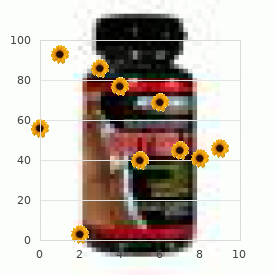
Order 100 mg diclofenac with visa
Finally, hybrid approaches involve a combination of open and endovascular intervention. It should be talked about, nonetheless, that the open bypass technique was associated with significantly longer length of keep in addition to significantly increased morbidity (18. Several non-invasive methods are probably useful for assessing the severity of aortoiliac illness. Hemodynamically, vital aortoiliac disease may be detected through evaluation of Doppler recordings of bloodflow velocity from the widespread femoral artery using duplex Doppler tools. The waveforms are normally analyzed by subjective analysis or quantified by the calculation of pulsatility index 27 or other measurements. Alternatively, peak velocity measurements could be made along the size of the aortoiliac segment. A stenosis greater than 50% is diagnosed if the height velocity is at Treatment 249 advances in device design. Thus, considerations for selecting a revascularization method should embody patient anatomy, affected person co-morbidities, technical factors, surgical expertise and resources and patient choice. Thus, for lesions that will appear to be finest managed through an open surgical method, affected person comorbidities must be carefully accounted for as those who are at high threat for restore may be higher served with endovascular therapy regardless of need for secondary intervention given their general co-morbid situation. Additionally, sufferers with small external iliac arteries, high-risk lesions for embolization. In situations where lower extremity access poses challenge, higher extremity entry can be thought-about but carries elevated access website morbidity due to the need for larger arteriotomies in smaller vessels in order to accommodate sheaths and gadgets for angioplasty and/or stenting. Access to prime quality angiographic facilities with hybrid capabilities will increase the scope of choices obtainable, assuming the operator is substantially educated and skilled with these methods. Even although this is in all probability not obtainable at the centre in which the patient is first evaluated, obtainable choices (as nicely as their associated benefits and risks) ought to be mentioned with patients earlier than dedication to a selected revascularization strategy is made. In addition to After adequate arterial access is obtained, conventional catheters and guidewire technique is used to navigate across the lesion of concern. If difficulty is encountered, use of different catheter/ guidewire combos similar to these which are angled and hydrophilic is recommended along with consideration of choosing a special access web site if essential. Upon traversing the lesion of concern, a decision of whether or not to use transluminal angioplasty alone versus transluminal angioplasty with stenting for technical failure versus main stenting alone is made. Transluminal balloon angioplasty is often primarily used but has been associated with failure ensuing from creation of flow-limiting dissections and inadequate dilation due to elastic recoil from atherosclerotic plaques. In these eventualities, subsequent deployment of a stent serves to cover the created dissection airplane and oppose the inherent recoil in the newly dilated section. With regard to stenting, additional choices contain whether to use balloon expandable or self-expanding stents in addition to whether or not to use naked metallic stents or lined stents. Stent choice is usually based on operator desire and availability, and no one stent has demonstrated Surgical treatment 251 superiority. Numerous modifications to the kissing stent place have been made in efforts to reduce the difference between the stented lumen and the aortic lumen so as to reduce radial mismatch. Recently, in vitro studies supporting using the Covered Endovascular Reconstruction of the Aortic Bifurcation approach, in which the two iliac limbs are placed contained in the tapered portion of the aortic cuff, were found to be helpful in maximally decreasing radial mismatch. Finally, for either balloon angioplasty or stenting, sizing is set so that balloon or stent diameter is 10%�15% larger in diameter compared to the adjacent normal artery. The appropriate length of the balloon or stent is chosen so that the whole lesion of concern is traversed whereas minimizing the amount of adjoining normal artery covered. The procedure often entails an open endarterectomy of the distal aorta and either an open or semi-closed endarterectomy of 1 or each widespread iliac segments down to the extent of the exterior iliac arteries. A persistent diameter discount of greater than 30% is considered to be inadequate as is a mean blood stress gradient greater than 5 mmHg. Using both radiographic strategies of assessment along side direct blood pressure gradient measurement permits for assessing the anatomic and hemodynamic impression of the endovascular intervention performed. Results of endovascular remedy In 1998, the Dutch Iliac Stent Trial Study Group launched results of their randomized comparability of major stent placement versus main angioplasty followed by selective stent placement in patients with iliac artery occlusive illness. If the risk of infection is excessive, endarterectomy is preferable to prosthetic bypass grafting. In chosen circumstances, aortoiliac endarterectomy is beneficial as a salvage process for the treatment of an contaminated aortofemoral bypass graft. After elimination of the infected prosthesis, the arterial channel to the leg may be reconstituted by endarterectomy of the native vessels and patching with autogenous material.
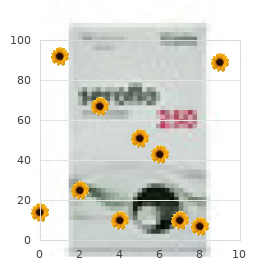
Purchase generic diclofenac pills
There are many variations of particular below-knee prostheses from a simple pylon with a nonmotion foot to energy-storing prostheses. The distal supracondylar amputation and Gritti-Stokes methods have lost popularity because of the belief that the through-knee amputation has the benefit of preserving proprioceptive areas of the joint and affords higher bone size, which makes manipulation of a prosthesis less complicated. As with the below-knee amputation, myodesis procedures (except as described later), where the muscular tissues are sutured or otherwise fastened to holes drilled within the bone, are usually not inspired in the dysvascular affected person. It is much less complicated, just as useful, and probably permits becoming of a more cosmetic prosthesis to divide the muscles distal to the location of bone division and then to suture antagonistic teams over the top of the bone stump, anchoring them to one another and to the periosteum. A approach using laterally placed flaps is favoured for through-knee amputation in some centres,seventy six significantly if the anterior skin-flap region is compromised by ischemia. In addition, proprioceptive info coming from the capsular structures of the knee is preserved. It is difficult to get cosmetic or matching knee centres, even with new 4-bar hyperlink knees. If a through-knee amputation is to be carried out, the skin incision must be distal to the knee joint by 4�5 cm (level of the tibial tubercle), and the patella and patellar tendon are often preserved and sutured over the uncovered femoral condyles. Preferably the affected person is placed inclined and an anterior-based pores and skin flap is created. The incision is deepened straight by way of to the depth of bone, perpendicular to the skin, and the muscular tissues and tendons hooked up to the higher part of the tibia (sartorius, gracilis, semitendinosus, quadriceps enlargement and gastrocnemius) are divided. The patellar tendon is separated from the tibial tubercle and the knee joint is entered anteriorly. The resection continues under the menisci, preserving the capsular attachments to the rims of the medial and lateral meniscus. The described joint incision helps to protect the rich proprioceptive supply of the knee joint. With the knee bent, the posterior capsule of the joint is divided, giving access to the popliteal neurovascular constructions. The artery and vein are suture ligated, and the nerves are brought down, ligated after which allowed to retract up into the muscle bulk. Preservation of the patella and patellar tendon conserves the broad kneeling area of the knee. Above-knee amputation Because ambulation after above-knee amputation is directly associated to bone size, this procedure is completed with the aim of preserving the maximum possible bone length. The traditional level of amputation is just above the terminal flare of the femur, allowing approximately 10 cm for the interposition of a synthetic knee joint between the stump and the traditional knee axis. We have usually used anterior and posterior flaps, however a circumferential incision can be suitable. Short flaps are most popular due to the potential of jeopardizing blood provide in long flaps. The incision passes through the pores and skin, subcutaneous tissue and deep fascia without undermining after which is continued obliquely via the muscle layers towards the anticipated line of bone section. The sciatic nerve is exposed more posteriorly and ligated after being pulled down, Superficial femoral vessels Gracilis S or Rec art emo tus f ris Profunda femoris vessels Femur Vastus Adductors Hamstrings Sciatic N. The bone is sectioned utilizing a hand or electrical noticed, and the ends are smoothed with a file. Opposing muscle teams are then sutured over the end of the bone, with special consideration being given to fixation of the rectus femoris and hamstrings to each other and to the periosteum to protect balance of contractile function. The adductor magnus and fascia lata are sutured to one another transversely over the bone. Careful approximation of muscle layers additionally obliterates lifeless space throughout the wound. The fasciae of the anterior and posterior flap are then approximated with interrupted, absorbable sutures. If necessary, wound drainage may be instituted with a closed suction drain or a Penrose tissue drain positioned on the base of the flaps. However, absolute hemostasis is well price the effort since drains enhance the potential of an infection. The amputation dressing is then applied, and a plaster-of-Paris cast may be added, especially if a prosthesis is to be used instantly.
Generic 75mg diclofenac visa
Some changes occur instantly after childbirth (first few days to 1 week), whereas others emerge over a longer time period. Subjective evaluation of the postpartum lady contains her basic total emotions, orientation, comfort, sleep, diet, and emotions. Objective evaluation includes examination of her basic appearance, vital signs, neurologic system, heart and lungs, breasts, gastrointestinal system, urinary system, perineal space, anal area, and decrease extremities, in addition to laboratory evaluation. The initial postpartum examination ought to include a evaluation of techniques in addition to educating parts of early postpartum concerns, what to expect, duration of those adjustments, and when to name a clinician. Postpartum instructing truly begins during prenatal care and continues throughout the puerperium. Postpartum teaching also can occur at various alternatives, such as with a methods evaluate or during an examination. In addition, all Skin-to-Skin Contact (Kangaroo Care) When potential, skin-to-skin contact (infant to father or mother or caregiver) should be encouraged and facilitated postpartum. Skin-to-skin contact has been shown to induce a physiologic response in the new child and is known to promote stabilization of toddler respiration, coronary heart rate, and pores and skin temperature (Feldman, 2004); it also influences the duration and frequency of breastfeeding (Moore, Anderson, Bergman, & Dowswell, 2012). Additionally, nervousness is decreased and women report higher confidence when returning house with a new child when skinto-skin contact was initiated following childbirth (Moore et al. Furthermore, newborns are reported to cry less and stay in an alert, calm, or drowsy state for a time period after skin-to-skin contact is discontinued (Tallandini & Scalembra, 2006). The proportion of healthcare facilities selling skin-to-skin contact continues to enhance within the United States, with 54% (2011) reporting most newborns (90%) obtain skin-to-skin contact 822 Chapter 32: Postpartum Care girls ought to receive a educating booklet with clearly printed warning signs (when to name the clinician). Later postpartum examinations have comparable elements, however instructing will be totally different. Although each 2-week and 6-week examinations are preferable, the 2-week examination has become nonexistent in many practices. Most postpartum issues or issues happen prior to 6 weeks, nevertheless, and delayed evaluation can stop early identification and therapy, thereby growing the danger of extreme sickness. Activity Women should ambulate quickly after start, even whether it is merely to get out of bed to void. In reality, encouragement of elevated fluid intake and the necessity to keep the bladder empty can facilitate early ambulation. The sooner exercise will increase, the sooner energy and energy will return and opportunities for thromboembolism will lower. Women recovering from a cesarean part are encouraged to ambulate and may regulate activity as needed (American College of Obstetricians and Gynecologists, 2015a). Clinicians ought to encourage postpartum train in a modified form soon after a vaginal delivery. Walking is a great exercise that may enhance temper in addition to increase oxygen consumption and circulation. Women can gauge uterine healing by lochia move and adapt exercise or return to activity as wanted. Too much activity can improve bleeding, but with rest, this side of healing ought to shortly return to regular. Abdominal exercises will aid the restoration of belly muscle tone and may start immediately after a vaginal start. Women are encouraged to start slowly and enhance exercising abdominal muscular tissues based on their comfort degree and therapeutic. Initial belly exercise entails mendacity flat with knees bent whereas elevating the top slowly. As healing progresses, repetitions can increase and stomach crunches can be added (American College of Obstetricians and Gynecologists, 2015a). Kegel exercises (strengthening vaginal musculature) can start immediately after a vaginal start. Exercise functionality differs amongst people and might depend upon the prior stage of proficiency. However, all girls must be encouraged to start exercise shortly after giving birth.
References
- Lose G, Sorensen HC, Axelsen SM, et al: An open multicenter study of polyacrylamide hydrogel (Bulkamid) for female stress and mixed urinary incontinence, Int Urogynecol J 21(12):1471n1477, 2010.
- Perloff JK. The clinical recognition of congenital heart disease. 4th edition. Philadelphia: Saunders. 1994.
- Delis SG, Bakoyiannis A, Tassopoulos N, et al. Radiofrequency-assisted liver resection. Surg Oncol. 2008;17(2):81-86.
- Michard F, Teboul JL. Using heart-lung interactions to assess fluid responsiveness during mechanical ventilation. Crit Care 2000; 4:282-289.






